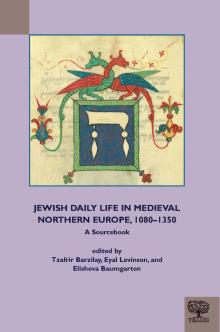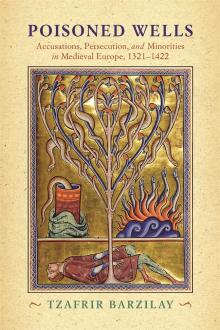Publications
-

Tomcats and Eagles The Development of the F-14 and F-15 in the Cold War
SummaryDuring the first half of the 1970s, two new fighter aircraft entered operational service in the United States: The Navy’s Grumman F-14 Tomcat and the Air Force’s McDonnell Douglas F-15 Eagle. These two aircraft were part of the backbone of the tactical air power of the United States; their introduction was accompanied by comprehensive reforms in pilot training as well as new technologies and weapon systems. In addition to the tactical significance of the two aircraft as innovative fighting platforms, however, their development and deployment should be viewed within a broad geopolitical and geostrategic context.
Tovy explains how the F-14 Tomcat and the F-15 Eagle were an integral part of the aerial component of the conventional arms race within the Cold War. He argues that the trend of Soviet advanced weapon systems development created a perception of threat to the United States, challenging its conventional military power. Tomcats and Eagles explores how the Vietnam War accelerated the need for advanced fighter-interceptors, and that the lessons learned from aerial combat in Vietnam had a significant impact on the design and operational characteristics of the F-15. The author reveals that after F-14s were sold to Iran and F-15s to Israel in the second half of the 1970s, these jets were integrated into their armed forces, leading to Israel’s use of the F-15 during the First Lebanese War. Finally, the author provides an in-depth look at the operation of the F-14 and F-15 in U.S. actions in Southeast Asia, beginning with the Tanker Wars in the mid-1980s, through Operation Desert Storm and Operation Enduring Freedom, and ending with Operation Iraqi Freedom. -

The Gulf of Tonkin The United States and the Escalation in the Vietnam War
SummaryThe Gulf of Tonkin: The United States and the Escalation in the Vietnam War analyzes the events that led to the escalation of the conflict in Vietnam and increased American involvement.
On August 4, 1964, the captains of two American destroyers, the USS Maddox and the USS Turner Joy, reported that their ships were being attacked by North Vietnamese torpedo boats. This report came on top of a previous report by the captain of the USS Maddox, indicating that he had been attacked by torpedo boats two nights earlier. The text introduces readers to the historiography of these incidents and how the perception of the events changed over time. The attacks, which were collectively called the Gulf of Tonkin incident, are presented in the context not only of the Vietnam War but also of the Cold War and U.S. government powers, enabling students to understand the events’ full ramifications. Using essential primary documents, Tal Tovy provides an accessible introduction to a vital turning point in U.S. and international affairs.
This book will be useful to all students of the Vietnam War, American military history, and foreign policy history.
-

The Merovingians in Historiographical Tradition: From the Sixth to the Sixteenth Century (Cambridge: Cambridge University Press, in press).
SummaryThe Merovingian centuries were a foundational period in the historical consciousness of western Europe. The memory of the first dynasty of Frankish kings, their origin myths, accomplishments, and failures were used by generations of chroniclers, propagandists, and historians to justify a wide range of social and political agendas. The process of curating and editing the source material gave rise to a recognisable 'Merovingian narrative' with three distinct phases: meteoric ascent, stasis, and decline. Already in the seventh-century Chronicle of Fredegar, this tripartite model was invoked by a Merovingian queen to prophesy the fate of her descendants. This expert commentary sets out to understand how the story of the Merovingians was shaped through a process of continuous historiographical adaptation. It examines authors from across a millennium of historical writing and analyses their influences and objectives, charting the often-unexpected ways in which their narratives were received and developed.
-

Jewish Daily Life in Medieval Northern Europe, 1080-1350
SummaryDesigned to introduce students to the everyday lives of the Jews who lived in the German Empire, northern France, and England from the 11th to the mid-14th centuries, the volume consists of translations of primary sources written by or about medieval Jews. Each source is accompanied by an introduction that provides historical context. Through the sources, students can become familiar with the spaces that Jews frequented, their daily practices and rituals, and their thinking. The subject matter ranges from culinary preferences and even details of sexual lives, to garments, objects, and communal buildings. The documents testify to how Jews enacted their Sabbath and holidays, celebrated their weddings, births and other lifecycle events, and mourned their dead. Some of the sources focus on the relationships they had with their Christian neighbors, the local authorities, and the Church, while others shed light on their economic activities and professions.
-

Poisoned Wells: Accusations, Persecution, and Minorities in Medieval Europe, 1321-1422
SummaryBetween 1348 and 1350, Jews throughout Europe were accused of having caused the spread of the Black Death by poisoning the wells from which the entire population drank. Hundreds if not thousands were executed from Aragon and southern France into the eastern regions of the German-speaking lands. But if the well-poisoning accusations against the Jews during these plague years are the most frequently cited of such cases, they were not unique. The first major wave of accusations came in France and Aragon in 1321, and it was lepers, not Jews, who were the initial targets. Local authorities, and especially municipal councils, promoted these charges so as to be able to seize the property of the leprosaria, Tzafrir Barzilay contends. The allegations eventually expanded to describe an international conspiracy organized by Muslims, and only then, after months of persecution of the lepers, did some nobles of central France implicate the Jews, convincing the king to expel them from the realm.
In Poisoned Wells Barzilay explores the origins of these charges of well poisoning, asks how the fear took root and moved across Europe, which groups it targeted, why it held in certain areas and not others, and why it waned in the fifteenth century. He argues that many of the social, political, and environmental factors that fed the rise of the mass poisoning accusations had already appeared during the thirteenth century, a period of increased urbanization, of criminal poisoning charges, and of the proliferation of medical texts on toxins. In studying the narratives that were presented to convince officials that certain groups committed well poisoning and the legal and bureaucratic mechanisms that moved rumors into officially accepted and prosecutable crimes, Barzilay has written a crucial chapter in the long history of the persecution of European minorities. -

The Neo-Assyrian Empire in the Southwest Imperial Domination and its Consequences
SummaryThe Assyrian empire – the first large empire of the ancient world – had fascinated the public imagination ever since the spectacular discoveries of the 19th century. The southwestern periphery of this empire –the lands of the Bible – boasts the richest archaeological dataset in the world, and along with various historical sources including the Hebrew Bible, provides a detailed case-study for the study of ancient empires and imperialism. The book analyzes the nature of Assyrian imperial control and its impact on the region’s settlement, demography and economy, and shed light on Assyrian imperial interests, tactics, and strategies, exposing the limitations of imperial control, and even the ways later empires overcame these limits.
- An unparalleled, detailed exploration of the southwestern region of the Assyrian empire, both prior to Assyrian conquest and under its domination
- Presents a comparative analysis between distinct political and ecological zones to investigate the impact of ecology and politics on the outcome of imperial conquest and control
- A wider perspective on the Southern Levant offers new insights into the role of distant provinces in the economic and political structure of ancient empires, the challenges posed by distance, and the various ways later ancient empires overcame these challenges
-

German Neo-Pietism, the Nation and the Jews: Religious Awakening and National Identities Formation, 1815-1861
Summaryהספר עוסק בהמשגה הלאומית של היהדות והיהודים על ידי תנועת ״ההתעוררות הדתית״ הגרמנית בשנים 1815-1861. אנשי התנועה הגדירו את היהדות כסינתזה לאומית-דתית, במקביל לאופן בו הגדירו את מהותה של הזהות הלאומית הגרמנית. על מנת לעמוד על התהוות התפיסה הייחודית הזו, הספר מתחיל בראשית דרכה של תנועת ההתעוררות המקורית, הפייטיזם הגרמני, מסוף המאה ה- 17. לפי הטענה המרכזית העולה מהניתוח ההיסטורי-תיאולוגי שבספר, ״ההלאמה״ של היהדות הסתמנה כבר לאחר מלחמת שלושים השנים כחלק מהשקפה מחודשת ביחס לדת ולאמונה בכלל, והתפתחה בהתמדה עד המאה ה- 19. מבחינה זו, ההתנגדות של אנשי התנועה לאמנציפציה במאה ה- 19 לא נבעה בהכרח מאנטישמיות מובהקת, כי אם מהבנה שונה של המזיגה הדתית-לאומית. בהתאם לכך, סברו ״הפייטיסטים״ שהפתרון ההולם ביותר ל״שאלה היהודית״ אינו אמנציפציה, ואף לא המרה המונית, כי אם קיום פוליטי עצמאי של האומה היהודית בפלשתינה.



